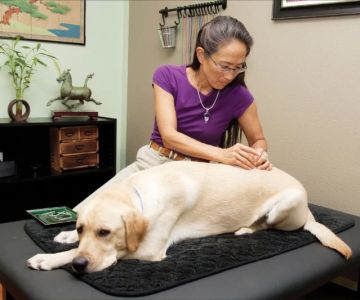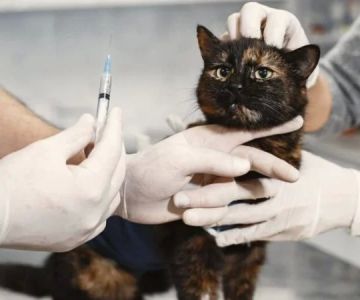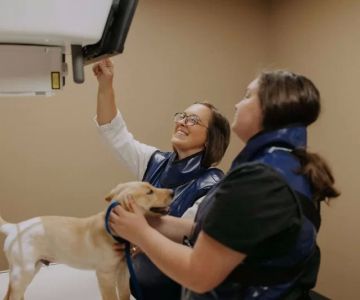Can You Shadow a Veterinarian? A Complete Guide for Aspiring Vets
- What Is Veterinary Shadowing?
- Why Shadowing a Veterinarian is Important
- How to Shadow a Veterinarian
- The Benefits of Shadowing a Veterinarian
- Real-Life Shadowing Stories
What Is Veterinary Shadowing?
Veterinary shadowing refers to observing and learning from a professional veterinarian in a real-world setting. It provides aspiring veterinarians the opportunity to gain hands-on experience and see firsthand the daily responsibilities and challenges faced by veterinarians. Unlike internships, shadowing usually does not involve direct involvement in patient care but instead focuses on observation and learning about the workflow, patient interactions, and medical procedures.
As a pre-veterinary student or someone considering a veterinary career, you might wonder, "Can you shadow a veterinarian?" The answer is yes! Veterinary shadowing is not only possible but highly recommended if you want to understand what it truly takes to be a vet.
Why Shadowing a Veterinarian is Important
For aspiring veterinarians, shadowing provides a crucial insight into the realities of veterinary medicine. It is one of the most effective ways to explore whether this career path aligns with your interests and abilities. Here are some reasons why shadowing a veterinarian is important:
1. Gaining Practical Experience
Even though you may have studied textbooks and theory in school, there is nothing like seeing the work in action. By shadowing a veterinarian, you get a sense of what goes on behind the scenes, including how vets handle patient care, diagnoses, and treatments.
2. Learning About Veterinary Specializations
Veterinary medicine has many different fields, including surgery, cardiology, and dentistry, to name a few. Shadowing different veterinarians allows you to explore these specializations and decide which area might be the most fulfilling for you.
3. Building Connections
Shadowing a veterinarian opens doors to networking opportunities. You can meet professionals in the field, learn about their career journeys, and even receive valuable mentorship that can guide you throughout your veterinary career.
How to Shadow a Veterinarian
If you’re wondering how to shadow a veterinarian, the process is relatively straightforward, but it does require planning and initiative. Here are the essential steps:
1. Research Veterinary Clinics and Hospitals
Start by researching local veterinary clinics, animal hospitals, and even research facilities that may offer shadowing opportunities. Many veterinarians are willing to have students observe their work, but reaching out to the right places is key. You can look for opportunities in your area or nearby cities.
2. Reach Out Professionally
Once you’ve identified potential veterinarians to shadow, send a polite and professional email or letter. Express your interest in veterinary medicine, explain why you want to shadow them, and inquire if they are open to having a student observe. Be sure to highlight any relevant experience, such as previous volunteer work with animals, which could make you a more attractive candidate.
3. Be Persistent and Flexible
Sometimes it takes time to secure shadowing opportunities. Veterinarians may be busy or have full schedules, so it’s important to be patient and flexible. Follow up politely after a week or two if you haven’t received a response, and be open to different times or locations that might work for the veterinarian.
The Benefits of Shadowing a Veterinarian
Shadowing a veterinarian has numerous benefits that can help you on your path to becoming a vet:
1. Confirmation of Your Career Choice
Shadowing allows you to see the work firsthand and decide if it's something you're truly passionate about. Many aspiring veterinarians realize during shadowing that the daily responsibilities don’t align with their expectations. This can save time and energy in pursuing a career that’s better suited to your interests.
2. Strengthening Your Application
Veterinary schools look for candidates who are committed to their career choice and have gained experience in the field. Shadowing shows that you are serious about pursuing a veterinary career, and it strengthens your application when applying to veterinary programs.
3. Gaining Real-World Insights
While textbooks and lectures provide theoretical knowledge, shadowing gives you a realistic understanding of veterinary medicine. It’s an opportunity to observe how veterinarians interact with pet owners, manage patient care, and even deal with the emotional challenges that come with the job.
Real-Life Shadowing Stories
Many aspiring veterinarians have had transformative experiences through shadowing. For example, Sarah, a pre-veterinary student, shadowed Dr. Thompson, a veterinarian at a local animal clinic. Through her experience, Sarah learned about the unique challenges of treating both common and rare animal diseases. She witnessed a surgery for the first time and developed a deeper understanding of the delicate balance between the technical and compassionate aspects of veterinary care. That experience solidified her decision to pursue a veterinary degree.
Similarly, Michael, another aspiring vet, shadowed a specialist in exotic animals. He gained invaluable knowledge about the care of reptiles, birds, and small mammals, which ultimately led him to pursue a career in exotic animal medicine.











